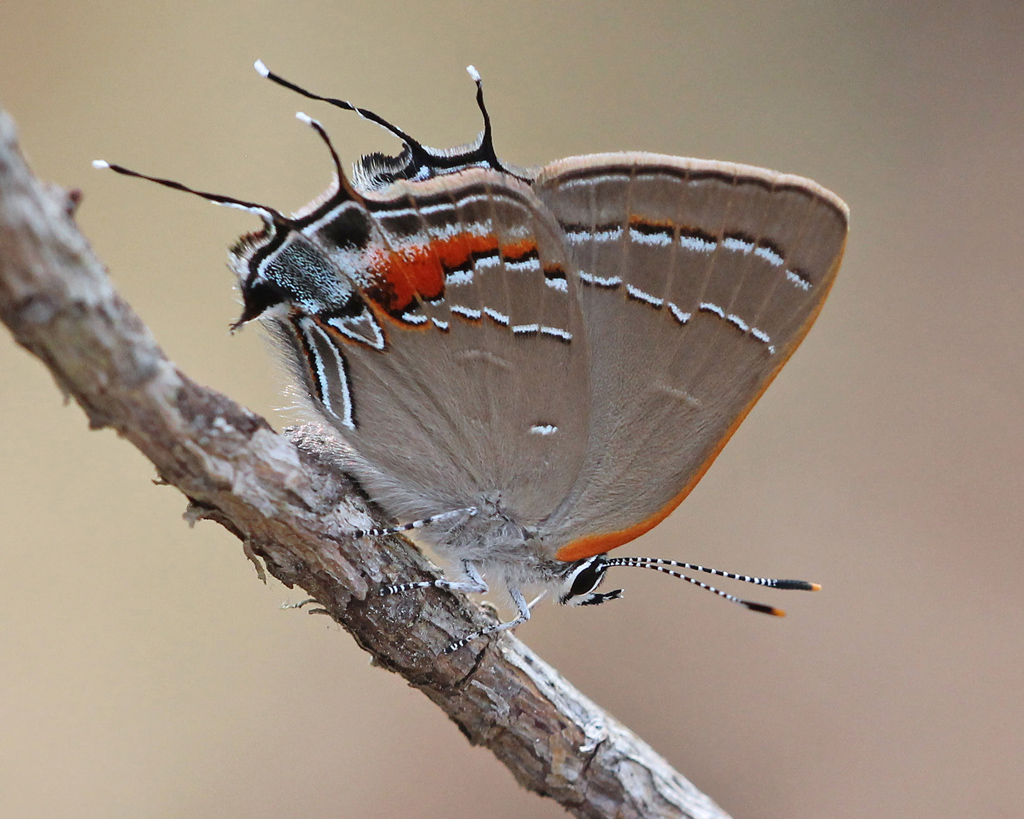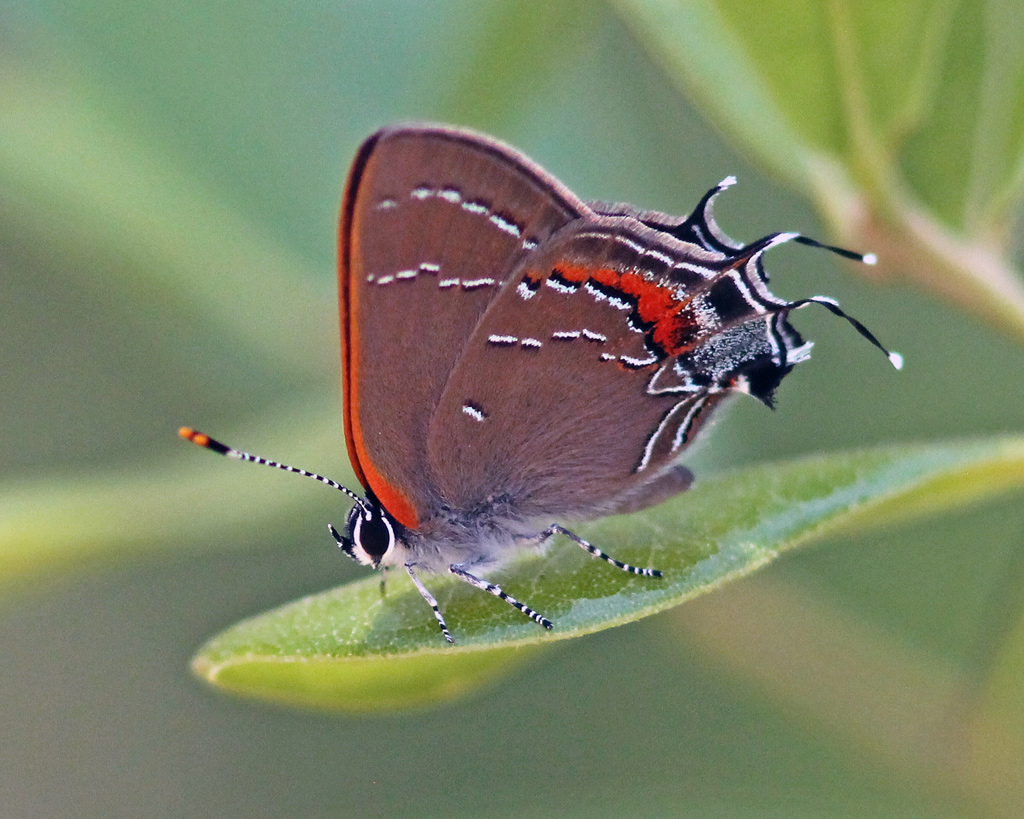Oak hairstreak butterfly
“Know your native pollinators” is a series of articles that will help you identify and appreciate Florida’s varied pollinators, including bees, wasps, butterflies, moths, beetles, flies, birds and bats. Pictured above: Oak hairstreak butterfly (Satyrium favonius) . Photo by Mary Keim.
You might not see very much of the Oak hairstreak butterfly, but that doesn’t mean they aren’t around. They are usually just hanging out in the trees above your head!
CLASSIFICATION
Order: Lepidoptera
Family: Lycaenidae
Subfamily: Theclinae
Genus Species: Satyrium favonius
FORAGING PREFERENCES
Caterpillars will feed on oak leaves, buds and male catkins. Adults feed on flowering plants, including milkweed. They are especially fond of Swamp milkweed (Asclepias incarnata), Maleberry (Lyonia ligustrina), and Sparkleberry (Vaccinium arboretum).
IDENTIFICATION
Oak hairstreak butterflies can be identified by the two tails on each hindwing. They have greyish-brown undersides with a blue tail-spot and orange coloring above. A black “W” with white edging is located near the inner margin. The top side of the wings is brown with a small orange spot near the tail. There is no blue on the top side. Males have a dark patch on their forewing. Wingspan is between 7/8 and 1½ inches.

Oak hairstreak butterflies have two tails on each hindwing. Photo by Mary Keim.
HABITAT
Oak hairstreak range stretches from peninsular Florida north to southern New England and Illinois, and as far southwest as New Mexico. This butterfly prefers oak woodlands, wooded coastal areas, edges and oak hammocks. It is also found in barrier islands and scrub habitat. Its minimum range is approximately 1 km within a contiguous habitat. Adults spend much of their time higher up in the tree canopy, so they often remain unnoticed. Binoculars are recommended for people looking to spot one.
LIFE CYCLE
Oak hairstreak butterflies produce one generation per year and winter as an egg. Eggs are flat, reddish-brown and disc-shaped. After emerging from the eggs, caterpillars are pale green and covered with small yellow spots. Conversely, the chrysalises they form are pale brown with black spots. You can find the southern variety of Oak hairstreak butterflies in flight from March to June. Oak hairstreaks are the earliest of the Satyrium genus to take wing.
References:
- Kelly and Thomas Naberhaus, coordinators. 2017. Butterflies and Moths of North America. 2019. https://www.butterfliesandmoths.org/species/Satyrium-favonius (Version 06242019)
- Pippen, Jeffrey. “Oak Hairstreak (Satyrium favonius, Fixsenia favonius).” 2018. https://www.jeffpippen.com/butterflies/oakhairstreak.htm
- Conserve Wildlife Foundation of New Jersey. “Northern Oak Hairstreak” 2019. http://www.conservewildlifenj.org/species/fieldguide/view/Satyrium%20favonius%20ontario/
- NatureServe Explorer. “Satyrium favonius – (J.E. Smith, 1797)” March 2019. http://explorer.natureserve.org/servlet/NatureServe?searchName=Satyrium+favonius
- Alabama Butterfly Atlas. “Oak Hairstreak.” University of South Florida. 2019. https://alabama.butterflyatlas.usf.edu/species/details/135/oak-hairstreak

